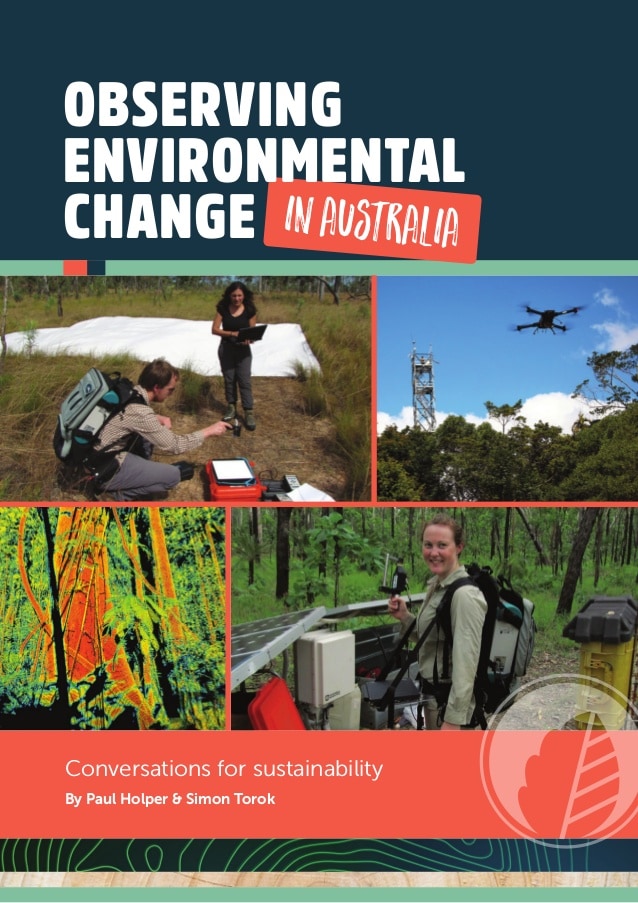About the book
“The book delivers a collection of stories that are engaging, thought provoking and as colourful and diverse as our environment,” writes Professor Lyn Beazley AO FTSE in the book’s foreword.
“It is a rich collection of conversations with people who are passionate about the natural environment and its integration with the social, economic, cultural, political, and health aspects of sustainability.”
Observing Environmental Change in Australia – Conversations for Sustainability covers the monitoring of environmental change, urbanisation and land-use changes, biodiversity, extreme events, climate, carbon and water.
Chapters detail the importance of Indigenous knowledge, the use of satellite remote sensing and drones, and managing ‘big data’. The book concludes with descriptions of visualising environmental monitoring data, emerging technologies, and the importance of engaging the community.
“The chapters capture the voice of Australian and international researchers sharing how they measure changes in Australia’s environment over time and space, the equipment they use and the data they gather, share and interpret,” says Professor Beazley.
Extensively illustrated with photographs and clear visualisations of scientific data, this book is a comprehensive and engaging review of how research infrastructure is transforming our understanding of ecosystems.
The scientific advances in decades to come will result from research infrastructure built today. And the success stories in this book would not have been possible without the past decade’s investment in infrastructure.
The book has been written by experienced science communicators Mr Paul Holper and Dr Simon Torok of Scientell.
“It has been a pleasure to have interviewed many of the leading and most influential ecologists in Australia to hear how TERN and other NCRIS infrastructure has supported successful science for the past decade,” says Mr Holper.
“Without exception, they were unfailing in their preparedness to help us. Thank you everyone for your generous contributions.”
“The book is a valuable resource for secondary and tertiary students and teachers, politicians and government departmental leaders, researchers, environmental NGOs, and anyone interested in the environment.”
Who is it for?
The book is an accessible guide to ecosystem science and its underpinning research infrastructure and is designed for upper secondary and early tertiary level students.
It is designed to fill the gap between technical textbooks requiring prerequisite knowledge and TV environmental documentaries that tend to concentrate on the most dramatic landscapes and/or charismatic presenters.
Contents
The book contains chapters on:
- Tracking environmental changes
- Urbanisation
- Indigenous knowledge
- Extreme events
- Land and terrain
- Biodiversity
- Climate, carbon and water
- Satellite remote sensing
- Big data
- Visualising environmental data
- Engaging the community
- Emerging technologies
Availability
We invite you to view and download a PDF copy of the book via SlideShare and share it with your friends and colleagues to help promote the value of Australian research infrastructure and data.
Soft copies are available for purchase ($20 plus postage) on request by emailing tern@uq.edu.au
The ISBN for the publication is 798-1-74272-231-3.
© TERN Australia at The University of Queensland 2019. Please contact tern@uq.edu.au for all permission requests.
Acknowledgements
TERN would like to say thank you to the authors Paul Holper and Simon Torok from Scientell, Kathy Mason from Kelani Design for the stunning design, Lyn Beazley for the wonderful foreword, Max McMaster for the comprehensive index, and all the book’s contributors for telling their stories and sharing their photos! Obviously, we couldn’t have achieved this without you! Thank you!
We look forward to delivering another 10 years of the best possible ecosystem science research infrastructure and open data.







